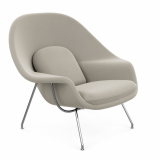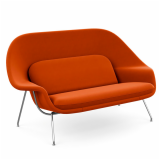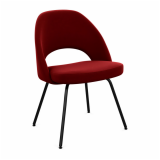Reintroducing The Womb Settee
Eero Saarinen's Womb for two returns to Knoll's product offerings
After more than six decades, Knoll is pleased to reintroduce the Model 73 Womb Settee, the double-wide version of Eero Saarinen’s classic Model 70 Womb Chair.
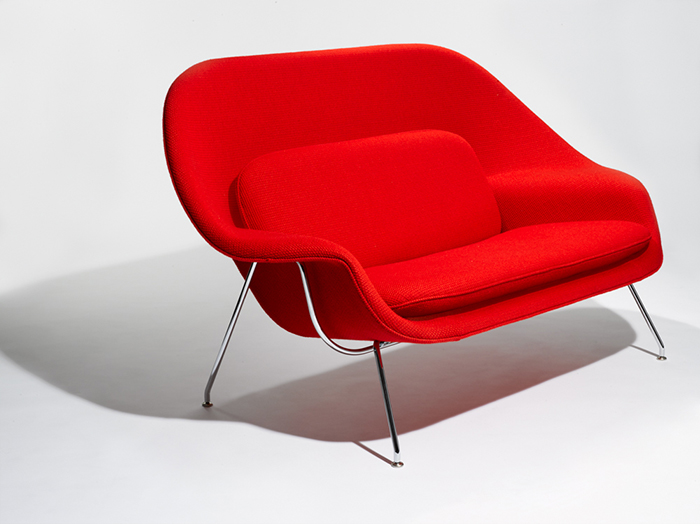
The Model 73 Womb Settee designed by Eero Saarinen, 1948. Photograph by Knoll.
Designed by Saarinen in 1948, the fit-for-two settee was not part of the designer's famous trio—the Model 70 Womb Chair, Model 71 Executive Arm Chair and Model 72 Executive Armless Chair—but, rather, developed in anticipation of Saarinen’s first big architectural commission.
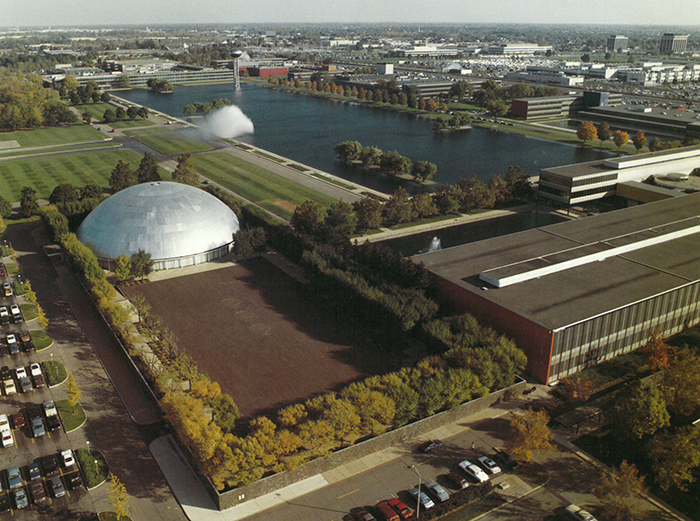
General Motors Technical Center, 1948-1956 designed by Eero Saarinen. Photograph from the Knoll Archive.
In 1944, Eero Saarinen won a bid for a project that would bring the Finnish-American architect to international attention. The General Motors Technical Center in Warren, Michigan was a twenty-five-building complex that required furnishings for 5,000 people. Saarinen intended to fill that requirement using designs he was working on at the time for Knoll. While it remains unclear whether the Executive Armless Chair and Womb Settee were specifically designed for the project, furniture production was scheduled to meet the projected opening of the General Motors installations.
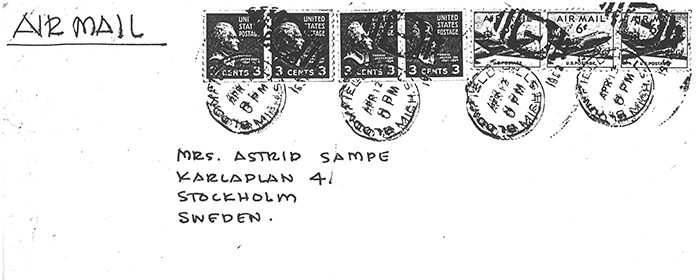
Envelope of Eero Saarinen's letter to Astrid Sampe. Courtesy of the Cranbrook Archive.
Paradoxically, Saarinen thought of the Womb Settee as “the little sister,” rather than the big brother, to the smaller Womb Chair. In an undated letter addressed to a friend, the textile designer Astrid Sampe, Saarinen wrote, “I have bothered a lot, made about fifteen models, they are funny things, almost impossible to draw.” Patent documents suggest Saarinen’s early plans for the settee’s shell involved two separate halves being joined at the center. Saarinen amended these earlier designs, opting instead to mold and shape the shell into a single piece, as it is today. To achieve the sculpted resin form, Saarinen, accompanied by Florence Knoll, enlisted the help of Hudson Winner, a boat maker who helped prototype many of Saarinen’s early designs. “He was very kind but a bit astonished to see the [object] in Eero’s hands,” Florence recalled, “because he didn’t know anything about a chair like that.”
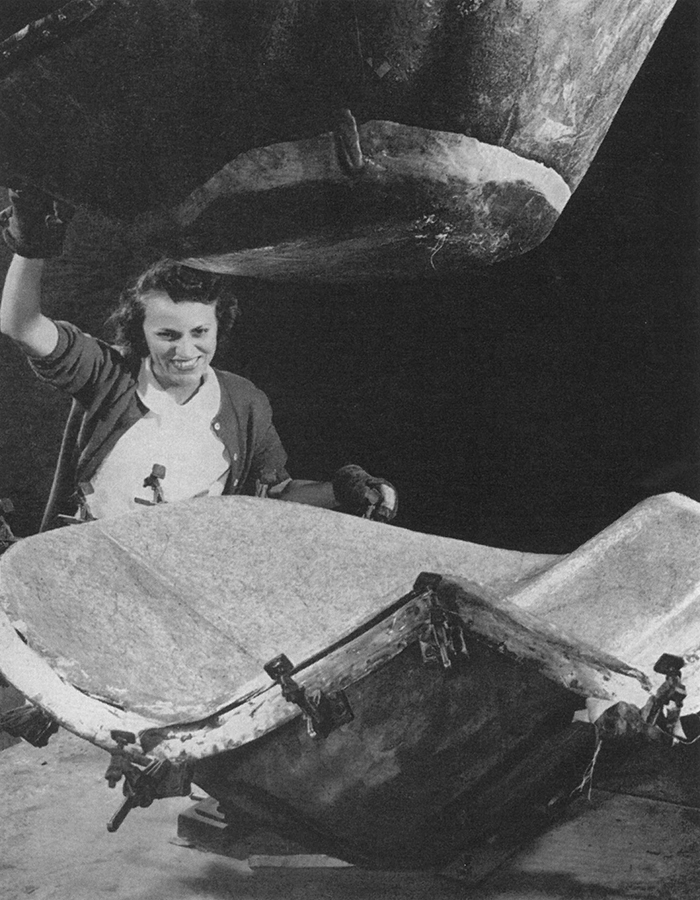
“We encountered all the same challenges they had in the late 1940s”
—Benjamin Pardo
The Winner Manufacturing Company pressing a fiber-reinforced polyester resin shell. Courtesy of Brian Lutz.
While the Womb Chair became the success story of its time, the Womb Settee was only in production for three years. Intended to stand up to heavy use within a corporate interior, the flexibility of the plastic shell, an asset in the Model 70 and 72 designs, proved problematic in the Model 73. Because of the extended seat, the chair’s arms were no longer supported by the base and prone to bending and breaking. Before the opening of the General Motors Technical Center in 1956, production was abandoned in favor of a more robust design.
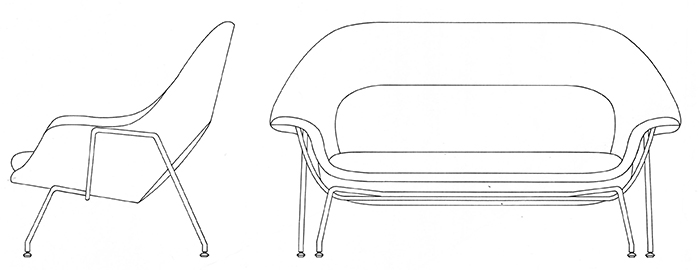
Dimensional drawing of Model 73 Womb Settee, 1948. Photograph from the Knoll Archive.
Knoll decided to revisit the design in 2012. Design Director Benjamin Pardo remembers it as a trying experience. “We encountered all the same challenges they had in the late 1940s,” says Pardo, and the reference materials proved to be of little help. “We had Saarinen’s original upholstery drawings,” Pardo explains, “but they were worth next to nothing, because when he built his prototypes, he changed things, and no one ever went back and noted those changes on the drawings.” In looking for solutions, the design team turned to 1940s originals, all of which were “subject to crumbling and compression on account of their age.”
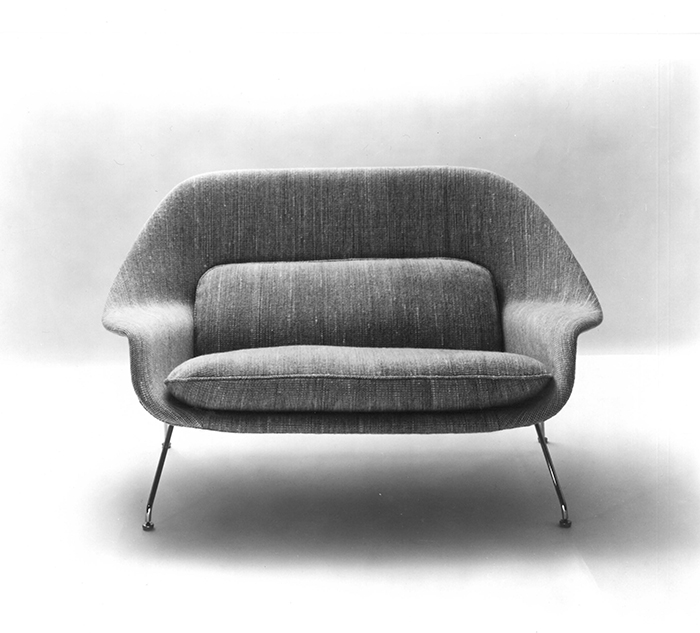
“He was very kind but a bit astonished to see the [object] in Eero’s hands...he didn’t know anything about a chair like that.”
—Florence Knoll
Promotional photograph of the Model 70 Womb Settee, 1948. Photograph from the Knoll Archive.
Ultimately the Knoll design team was able to overcome these structural problems through a technology called Reaction Injection Molding (RIM), strengthening the shell. “The one change we’ve made to the product is to add a strut, which is not visible, in order to provide additional support,” Pardo adds.
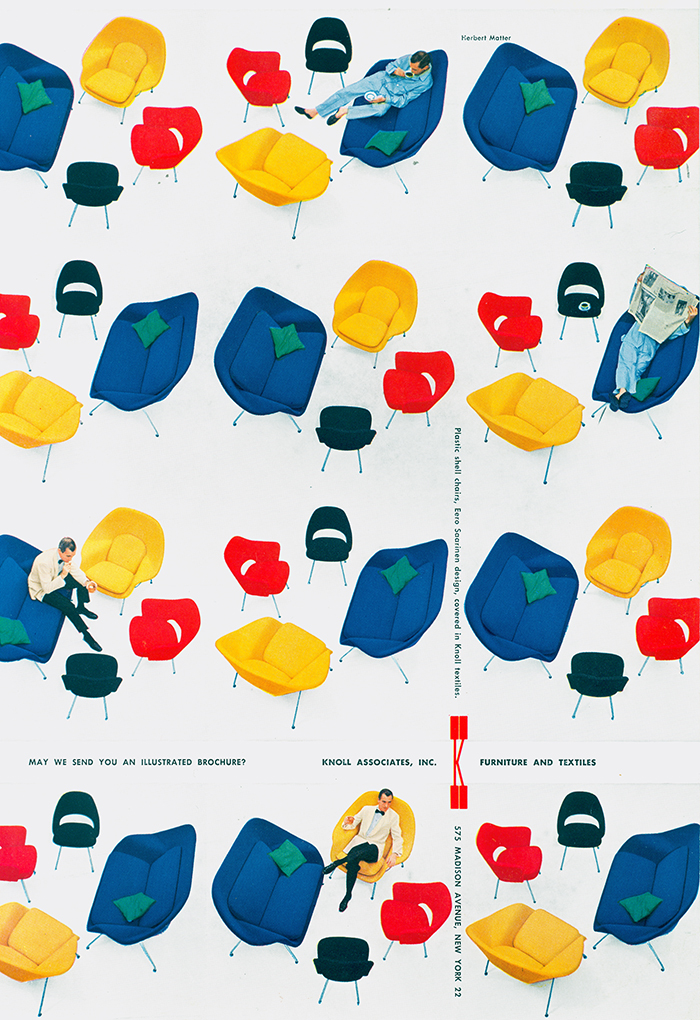
Herbert Matter advertisement for the 70 Series by Eero Saarinen. Photograph from the Knoll Archive.
At the time of the Womb Settee's design, Scandinavian designers were adapting traditional English settles— two to four-seat wooden benches that were popular in the mid-18th century—into something more modern. The savvy designers, including Arne Jacobsen, saw such designs as a way into more traditional homes that hadn’t yet accepted modernism. “Saarinen wasn’t blind,” says Pardo, “he saw the application.”
Of the clumsy, oversized models the Womb Settee was designed to replace, Saarinen wrote, “These dreadnaughts [have] disappeared from modern interiors partly because they were designed for an era that tried to impress by sheer mass.” While such robust forms may have gone out of vogue, Saarinen saw their necessary function as timeless: “The need for such chairs has not passed. Today, more than ever, we need to relax.”
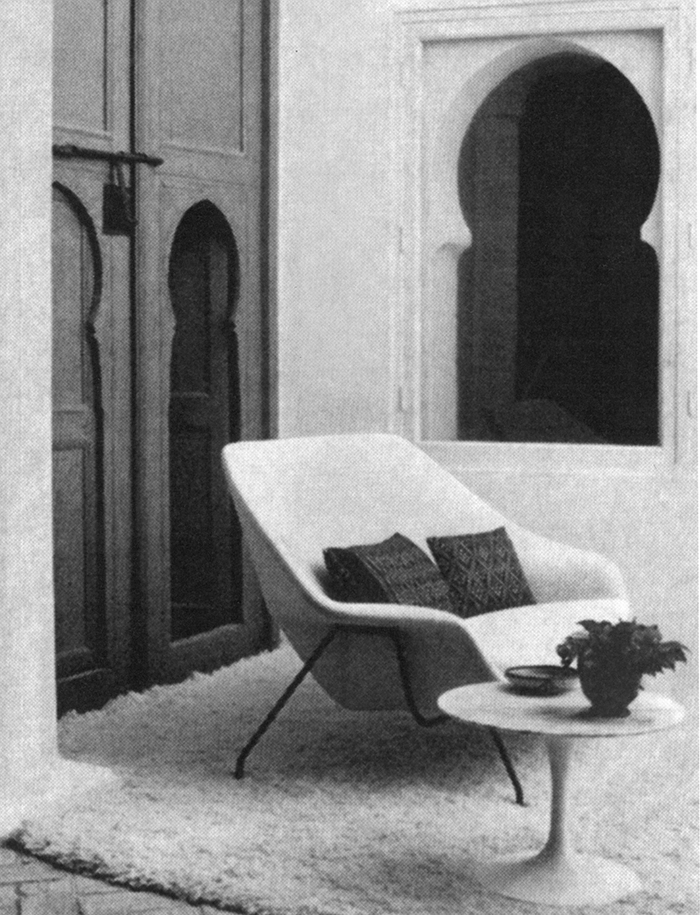
“The need for such chairs has not passed. Today, more than ever, we need to relax.”
—Eero Saarinen
Womb Settee at Yves Vidal and Charles Sévigny's home in Tangier, Morocco. Photograph from the Knoll Archive.
For purchasing information on the Womb Settee, visit a Knoll showroom, licensed retailer or shop online.



























